If your Notes document contain file-, image or OLE attachments, you may open and save these directly from within List Fields! You may even be able to open attachments not directly available in Lotus Notes, such as if you receive the dreaded More than 64 columns in HTML table error - see more on that below.
The Open- and Save support are available directly in the Output area. Click on on any $FILE-field to see details about file attachments. Click on the title to see the Open- and Save menu.
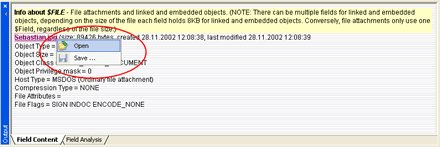
In the screenshot above you see the content of a $FILE-field. Click on the filename to show the Open and Save context menu. Select the option you want to perform.
Open
List Fields will automatically detach the file to your temporary file area, with a prefix of VCLF_ in the filename. Then List Fields will launch the file with your default application for this file extension. If no association between the file extension and application exist, you will be informed about that in an error message. List Fields will not delete the file after an Open operation.
Save ...
List Fields will prompt you for a filename:
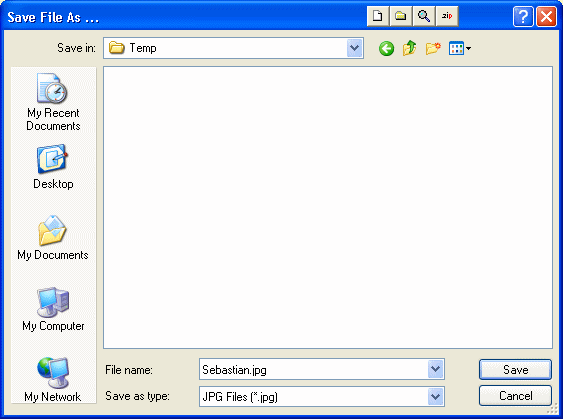
The filename from the Notes attachment itself is used as a default filename. Choose filename and where to save the attachment and press the Save-button.
List Fields will save the file attachment to the desired location.
More than 64 columns in HTML table error!
Have you ever seen this error message in Lotus Notes ?
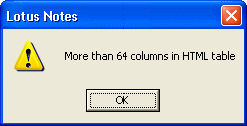
One way to get this error is if you receive an MIME encoded e-mail with a HTML table with more than 64 columns, you will see this error (in release 6.0.1 of the Notes client). The e-mail is impossible to open in Lotus Notes - but not with List Fields. Just open the document in List Fields and click on the $FILE-field, and then open or save the attachment as described above!
Even Open and Save of OLE attachment are supported!
If you have documents with imbedded OLE objects, such as Word- or Excel spreadheets, you normally can't save these objects to files. This is actually a limitation in the OLE standard itself, and not in Lotus Notes.
With List Fields you will have the option to open and save most OLE attachments, just as if they were normal file attachments!
Click on any $OLEOBJINFO-fields in a document. You will see an Output-area similar to this;
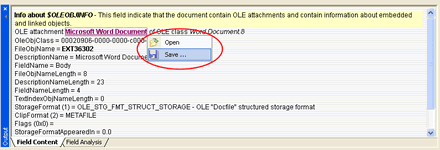
Just as for ordinary file attachments, you can click on the OLE attachment name, to see the Open and Save content menu.
Open
OLE objects does not know about filenames when they are imbedded, so List Fields will create a dummy filename composed on the following format:
VCLF_<OLE Attachment Name> (<FileObjName>).<File extension registered to OLE Class on your machine>
The FileObjName in the screenshot above is EXT36302 and is one of many internal filename that Lotus Notes assigns to the OLE object during imbedding. Finally List Fields determine what file extension the OLE Class (Word.Document.8 in the sample above) is associated with. On most computers with Microsoft Word or Microsoft Office installed, this will be .doc.
Now that List Fields know the filename, it is saved to your temporary directory, and the file is launched with it's default application, just as for file attachments.
If you either don't have a association between the OLE Class and application, or file extension and application, you can't open the OLE object automatically. But you can try to save it, and use other applications to open- and/or convert the file.
Save
When you select Save, you will be prompted for a filename;
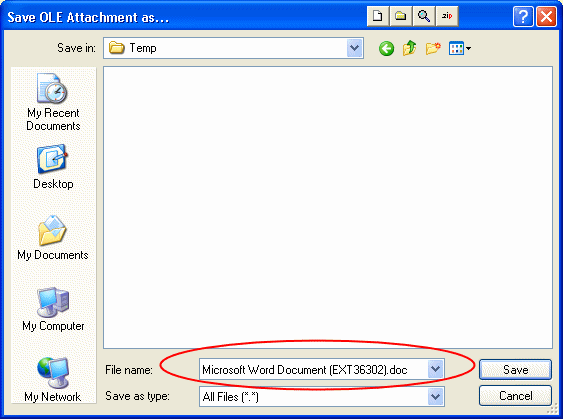
In the screenshot above, you clearly see the constructed default filename. Choose whatever filename and location you want to save your OLE object to, and press the Save-button.